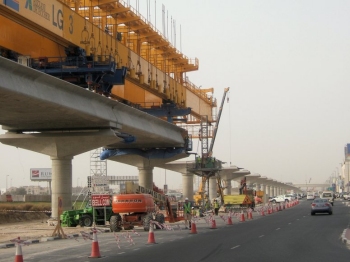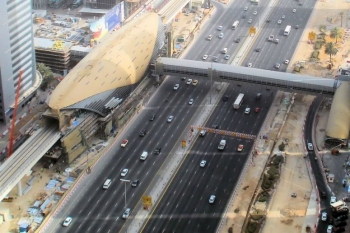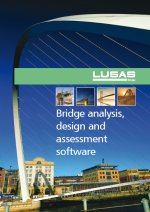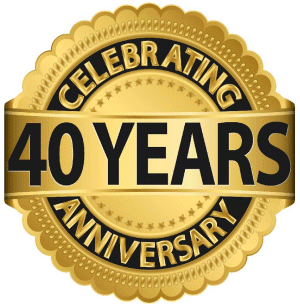For each footbridge, 3D thick beam elements modelled the primary structural members of the streel truss, crossheads, and concrete pierhead and pier. Piled supports were modelled using the equivalent cantilever method. Joint elements of appropriate stiffness and freedoms represented the articulation of the bearings. Lumped masses, applied throughout the model using joint elements, and with an appropriate eccentricity, modelled the mass distribution of the cladding and finishes to the roof, walls and floor.
From a close inspection of the mass-participation factors, eigenvalues and frequencies obtained from each LUSAS analysis the primary longitudinal, vertical, lateral and torsional modes could be identified. Graphs of total mass participation plotted against frequency showed quite clearly when particular amounts of structural mass became excited for certain freqencies. In addition, animations of selected eigenmodes permitted easy visualisation of the true structural response.
Design and checking Steel design was to BS 5400-3:2000 and BS EN 1993-1-8:2005. Post-LUSAS analysis calculations carried out on the main footbridge types included vibration serviceability checking to BD 37/01to ensure that the structure was not overly excited by pedestrian use, and aerodynamic checking to BD 49/01. Manuela Chiarello, engineer on the project said: "When we did the analysis of the longest non-travelator footbridge type with LUSAS and checked for susceptibility to aerodynamic excitation as defined by BD 49/01 we found that, whilst the structure passed the vortex excitation check, it didn’t comply with the divergent amplitude response check (for galloping) essentially because it was an enclosed structure that was just taking too much wind load, so a wind tunnel test was additionally carried out. This proved the structure wasn’t actually susceptible to galloping." David A Smith, Regional Head of Bridge Engineering at Atkins said: "The use of a modular design approach in conjunction with detailed LUSAS analyses of the main footbridge types enabled us to design the large number of footbridges required for the project in a very timely and efficient manner." The Red Line was officially opened in September 2009. The Green Line opened in 2010. Other analyses undertaken by Atkins on the Dubai Metro light rail project using LUSAS include:
"The use of a modular design approach in conjunction with detailed LUSAS analyses of the main footbridge types enabled us to design the large number of footbridges required for the project in a very timely and efficient manner." David A Smith, Regional Head of Bridge Engineering, Atkins Share this article
Find out more
Other LUSAS Bridge case studies:
|
|
Software Information
|
||||||||||||||||||||||
|
||||||||||||||||||||||||












